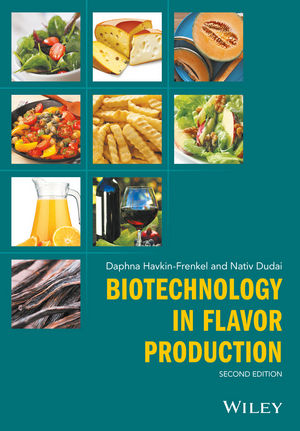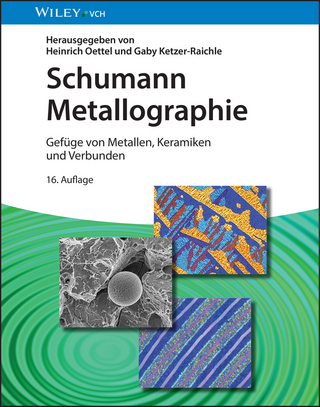
Biotechnology in Flavor Production
Wiley-Blackwell (Verlag)
978-1-118-35406-3 (ISBN)
- Titel z.Zt. nicht lieferbar
- Versandkostenfrei innerhalb Deutschlands
- Auch auf Rechnung
- Verfügbarkeit in der Filiale vor Ort prüfen
- Artikel merken
Chapters discuss recent developments in the flavor modification of wine, beer, and dairy products through the manipulation of the microbial species involved. Biotechnological approaches to the production of specific flavor molecules in microbes and plant tissue cultures, and the challenges that have been encountered, are also covered, along with the metabolic engineering of food crops for flavor enhancement - also a current area of research. Biotechnology is also being applied to crop breeding through marker-assisted selection for important traits, including flavor, and the book looks at the application of the biotechnological approach to breeding for enhanced flavor in rice, apple, and basil. These techniques are subject to governmental regulation, and this is addressed in a dedicated chapter.
This updated second edition features five brand new chapters, and the topics covered in the book will be of interest to those in the flavor and food industries as well as to academic researchers interested in flavors.
Dr Daphna Havkin-Frenkel, Department of Plant Pathology and Biology, Rutgers University, New Brunswick, New Jersey and Director of Research and Development, Bakto Flavors LLC, New Jersey. Dr Nativ Dudai, Researcher, Newe Ya'ar Research Center, The Agricultural Research Organization of Israel, Ramat Yishay, Israel.
Contributors xi
Preface xv
Chapter 1 The flavor of citrus fruit 1
Ron Porat, Sophie Deterre, Pierre Giampaoli and Anne Plotto
Introduction 1
Taste components of citrus fruit 3
Sugars 5
Acids 6
Bitter compounds 6
Aroma compounds of citrus fruit 8
Terpene hydrocarbons 9
Aldehydes 10
Alcohols 11
Esters 11
Ketones 11
Other volatiles 12
Citrus genes involved in flavor production 12
The unique flavor of different citrus species 13
The flavor of oranges 14
The flavor of mandarins 14
The flavor of grapefruit 15
The flavor of lemons 16
Accumulation of off-flavors in fresh citrus fruit during postharvest storage 17
Flavor of citrus essential oils 19
Acknowledgments 24
References 24
Chapter 2 Aroma as a factor in the breeding process of fresh herbs – the case of basil 32
Nativ Dudai and Faith C. Belanger
The importance of selecting for aroma in breeding of aromatic plants 32
The importance of genetic factors regarding the essential oil composition in aromatic plants 32
Sweet basil and the Ocimum genus 34
Uses of sweet basil 34
The chemistry of the aroma factors of plants: the essential oil 36
Essential oil profiles of common commercial basil varieties 36
Comparison of chemical analysis methods 41
Variation of the volatile compound composition within the plant 43
Variation of aroma compounds within cultivars and the potential for selection 45
Biosynthetic pathways of basil aroma components 47
Inheritance of aroma compounds in basil 50
Interspecific hybridization among Ocimum species 52
Applications of biotechnology-based approaches to modification of basil aroma 53
References 54
Chapter 3 Novel yeast strains as tools for adjusting the flavor of fermented beverages to market specifications 62
Jan H. Swiegers, Sofie M.G. Saerens and Isak S. Pretorius
Introduction 62
Wine 63
Beer 63
Saké 64
Wine, beer, and saké yeasts 64
Wine yeasts 65
Beer yeasts 67
Saké yeasts 67
Acids 69
Non-volatile acids 69
Volatile acids 72
Alcohols 74
Ethanol 74
Glycerol 76
Higher alcohols 78
Esters 83
Carbonyl compounds 91
Acetaldehyde 91
Diacetyl 93
Volatile phenols 95
Sulfur compounds 98
Sulfides 98
Mercaptans 102
Thiols 102
Monoterpenoids 106
Conclusion 109
References 109
Chapter 4 Biotechnology of flavor formation in fermented dairy products 133
Balasubramanian Ganesan and Bart C. Weimer
Introduction 133
Biochemistry of dairy fermentations 135
Biotechnology and flavor 138
Flavor production from bacteria 147
Comparative genomics of flavor production 149
Expression and metabolite analysis 154
Predictive bioinformatics 155
Non-culturable lactococci 156
Translation of omics to biotechnology 156
Conclusion 158
References 158
Chapter 5 Biotechnological production of vanillin 165
Daphna Havkin-Frenkel and Faith C. Belanger
Introduction 165
Biosynthesis of vanillin 168
Natural occurrence of vanillin 168
Site of vanillin production in vanilla beans 168
Vanillin biosynthetic pathway in Vanilla planifolia 170
Production of vanillin by biotechnology 171
Introduction 171
Use of microorganisms 172
Use of plant tissue culture 177
Use of enzymes 177
Use of physical and mild chemistry methods 181
Synthetic vanillin 182
Vanillin from vanilla beans 182
Regulations 183
Conclusions and future outlook 185
References 186
Chapter 6 Plant cell culture as a source of valuable chemicals 193
Chee-Kok Chin
Introduction 193
Establishment of callus culture 194
Initiation and maintenance of cell culture 197
Production of valuable chemicals by cultured plant cells 198
Metabolic engineering to improve chemical production 204
Concluding remarks 205
References 205
Chapter 7 Increasing the methional content in potato through biotechnology 211
Rong Di
Flavor compound methional in foods 211
Formation of methional 212
Synthesis of Met in plants 213
Biotechnology to enhance Met and methional 214
References 217
Chapter 8 Flavor development in rice 221
Louis M.T. Bradbury, Robert J. Henry and Daniel L.E. Waters
Introduction 221
Old flavors of rice 221
Rice texture 223
Fragrant rice 224
The chemistry of rice fragrance 227
The genetics of rice fragrance 228
BAD enzymes and 2AP synthesis 233
The future 237
References 237
Chapter 9 Tomato aroma: biochemistry and biotechnology 243
Rachel Davidovich-Rikanati, Yaron Sitrit, Yaakov Tadmor, Eran Pichersky, Natalia Dudareva and Efraim Lewinsohn
The major aroma impact volatiles in tomato and their biosynthetic pathways 243
Biosynthesis of tomato volatiles 244
Degradation of fatty acids 244
Volatiles derived from amino acids 246
Terpenes 248
Carotenoid pigmentation affects the flavor and volatile composition of tomato fruit 250
Genetic engineering of tomato aroma 253
Contribution of “omics” to improving our understanding of aroma biosynthesis and perception 256
Conclusion 258
Acknowledgment 258
References 258
Chapter 10 Breeding and biotechnology for flavor development in apple (Malus × domestica Borkh.) 264
Susan K. Brown
Quality 265
Apple volatiles 265
Ester compounds and ester biosynthesis 266
Measurement techniques 266
Varietal and developmental differences 267
Effect of storage 268
Effect of processing 269
Effect of 1-methylcyclopropene treatment 270
Hypoxia 270
Gene isolation 271
Genetic studies, linkage maps, and marker-assisted selection 271
ESTs 272
Transgenic approaches 273
Ethylene production and softening (ACS–ACO) 274
Consumer perceptions and sensory testing 274
References 275
Chapter 11 Biosynthesis and perception of melon aroma 281
Itay Gonda, Yosef Burger, Arthur A. Schaffer, Mwafaq Ibdah, Ya’akov Tadmor, Nurit Katzir, Aaron Fait and Efraim Lewinsohn
Introduction 281
Volatile composition of melon fruit 283
Odor perception 288
Biosynthesis of melon aroma volatiles 292
Terpenoids 292
Fatty acid-derived volatile aldehydes 293
Amino acid-derived aroma compounds 294
Formation of volatile alcohols from volatile aldehydes 296
Formation of volatile esters from volatile alcohols 297
The interphase between volatile and non-volatile metabolites 298
Changes of volatile profiles in transgenic melons inhibited in ethylene production 299
Concluding remarks 299
References 300
Index 307
| Erscheinungsdatum | 23.08.2016 |
|---|---|
| Verlagsort | Hoboken |
| Sprache | englisch |
| Maße | 178 x 252 mm |
| Gewicht | 812 g |
| Themenwelt | Naturwissenschaften ► Chemie |
| Technik ► Lebensmitteltechnologie | |
| Technik ► Umwelttechnik / Biotechnologie | |
| Weitere Fachgebiete ► Land- / Forstwirtschaft / Fischerei | |
| ISBN-10 | 1-118-35406-0 / 1118354060 |
| ISBN-13 | 978-1-118-35406-3 / 9781118354063 |
| Zustand | Neuware |
| Informationen gemäß Produktsicherheitsverordnung (GPSR) | |
| Haben Sie eine Frage zum Produkt? |
aus dem Bereich


